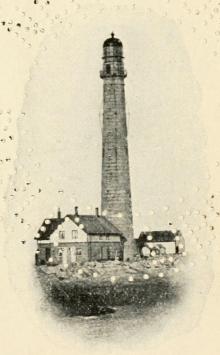The Life Savers: A story of the United States life-saving service 

by Anonymous
Genre: Nonfiction
Published: 2013
View: 4852
Read OnlineRead The Life Savers: A story of the United States life-saving service Storyline:
The development of the American Life-Saving Service covers nearly a century.“... The initiatory movement was the organization by a few benevolent persons of the Massachusetts Humane Society in 1786. In attempting to alleviate the miseries of shipwreck on the Massachusetts coast, small huts were built; and in 1807 the first life-boat station was established at Cohasset. The Society depended upon voluntary crews, but so much was accomplished of value that some pecuniary aid was received, as time wore on, from both State and general governments.“The magnificent work of the Coast Survey, begun in earnest in 1832, absorbed the resources of Congress for a decade and a half, during which period nothing was attempted in the way of life-saving except through voluntary societies. A few public vessels were, indeed, authorized in 1837 to cruise near the coast for the assistance of shipping in distress, but it was through the movement in aid of commerce, which extended to the lighthouse system.“In 1847, five thousand dollars were appropriated by Congress toward furnishing lighthouses on the Atlantic with the facilities for aiding shipwrecked mariners. The money, after remaining in the Treasury two years unused, was permitted to be expended by the Massachusetts society upon Cape Cod.“In the summer of 1848, the Hon. William A. Newell, then a member of the House of Representatives from New Jersey, incited by some terrible shipwrecks on the coast of that State, induced Congress, through his eloquence, to appropriate ten thousand dollars for providing surf-boats and other appliances ‘for the protection of life and property from shipwreck on the coast between Sandy Hook and Little Egg Harbor.’ During the next session a still larger appropriation was obtained. Twenty-two station-houses were erected on the coasts of New Jersey and Long Island, and although no persons were paid or authorized to take charge of them, and they were manned by extemporized crews, their value in several cases of shipwreck was so great that Congress made further appropriations from year to year, and stations and life-boats gradually multiplied.“Through the pressure of a shocking event in 1854—the loss of three hundred lives off the New Jersey coast—a local superintendent was employed, a keeper assigned to each station, and bonded custodians placed in charge of the life-boats, which had been repeatedly stolen; but the absence of drilled and disciplined crews, of general regulations, and of energetic central administration rendered the record of the institution unsatisfactory, and its benefits checkered by the saddest failures.“In the year 1871, Sumner I. Kimball succeeded to the head of the Revenue Marine Bureau of the Treasury Department, under the charge of which were the life-saving stations. He made it his first business to ascertain their condition. Captain John Faunce was detailed to make a tour of inspection, and was accompanied a portion of the way by Mr. Kimball himself. The buildings were found neglected and dilapidated, the apparatus rusty or broken, portable articles had been carried off, the salaried keepers were often living at a distance from their posts, some of them too old for service, and others incompetent, and the volunteer crews were in a quarrelsome temper with each other and with the coast population.“Then commenced that vigorous prosecution of reform which has crowned the humane work with unprecedented success. Making the most of slender appropriations, and in the face of perpetual discouragements, this one man, the chief of a bureau, pushed on by philanthropic impulses and guided by unerring judgment, brought a complete and orderly system into effect. It was not the work of a day, nor of a year. It required patience, sagacity, and rare powers of organization and government. He knew no office hours, working day and night at what many were pleased to consider a hopeless task. In his brain originated the idea of guarding the entire coasPages of The Life Savers: A story of the United States life-saving service :